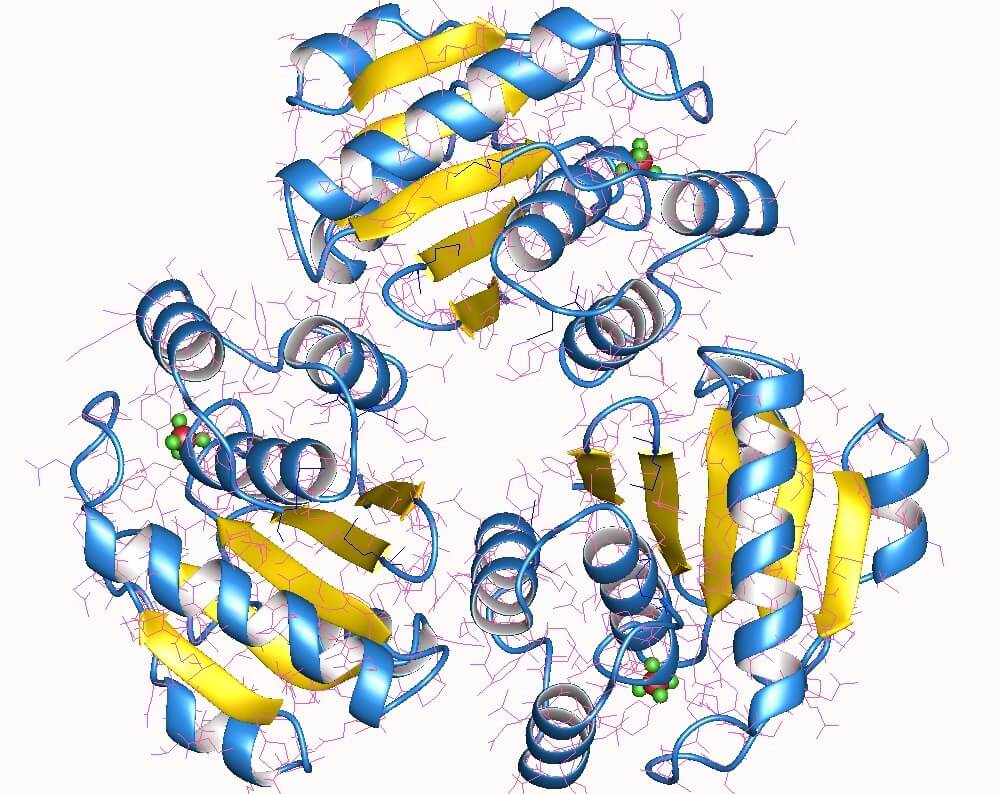Mempro™ Detergent-Free Phosphotyrosine Protein Phosphatases II Production
The experts from Creative Biostructure accumulate rich experiences in membrane protein production, our team can offer tailored Mempro™ Phosphotyrosine protein phosphatases II production services using detergent-free expression system.
Phosphotyrosine protein phosphatases II is a superfamily which consists of five protein families: Dual specificity phosphatase-like family, Higher-molecular-weight phosphotyrosine protein phosphatases family, Myo-inositol hexaphosphate phosphohydrolase (phytase) PhyA family, Mycobacterial PtpB-like family and Myotubularin-like phosphatases family. Higher-molecular-weight phosphotyrosine protein phosphatases family contains 6 members, which are Tyrosine phosphatase, Trotein-tyrosine phosphatase YopH catalytic domain, SptP tyrosine phosphatase catalytic domain, RPTP Lar, Protein-tyrosine phosphatase alpha, Tyrosine-protein phosphatase and non-receptor type 13. One of the members from Phosphotyrosine protein phosphatases II is tyrosine phosphatases. Protein tyrosine (pTyr) phosphorylation is an ordinary modification after translation which enables to produce new recognition motifs for cellular localization and protein interactions, besides, it also can influence protein stability.
 Figure 1. Crystal structure of Protein tyrosine phosphatase 1, trimer, Human. (Curr Opin Chem Biol 1998)
Figure 1. Crystal structure of Protein tyrosine phosphatase 1, trimer, Human. (Curr Opin Chem Biol 1998)
Creative Biostructure has ample professional experience in high quality Phosphotyrosine protein phosphatases II production using detergent-free membrane protein expression system, we can carry out various strategies for Mempro™ detergent-free protein production, including:
- Mempro™ Phosphotyrosine Protein Phosphatases II Production Using Nanodiscs
With the rapid progress of nanodisc technology, our capacity to learn and comprehend the functionality of membrane proteins has gained a big breakthrough. Nanodiscs are being used to study isolation, purification and solubilization of membrane proteins and are also an advanced tool to learn interacting companions of membrane embedded molecules.
- Mempro™ Phosphotyrosine Protein Phosphatases II Production Using Amphipols
Amphipols are a class of oligomers and polymers, which are synthesized by forming amide bonds between octylamine and, sometimes, isopropylamine. Amphipols are absolutely practicable tools for handling membrane proteins in detergent-free water solutions, and essentially they are a new class of surfactants.
- Mempro™ Phosphotyrosine Protein Phosphatases II Production Using Poly (styrene-co-maleic acid) Lipid Particles (SMALPs)
In contrast to nanodiscs, bicelles and amphipols, the greatest advantage of SMALPs is that there is no need to collect proteins from membranes with possibly destabilising detergents. This method generates SMALPs in which a little disk of lipid bilayer revolved around by polymer encircles the membrane proteins.
Our experienced scientists are confident in Phosphotyrosine protein phosphatases II production by using these novel detergent-free approaches. Creative Biostructure offers the best service to the customers around the world.
Creative Biostructure provides other various Mempro™ membrane protein production services. Please feel free to contact us for a detailed quote.
References:
Bayburt, T. H., & Sligar, S. G. (2010). Membrane protein assembly into Nanodiscs. FEBS letters, 584(9), 1721-1727.
Hille, B. (1978). Ionic channels in excitable membranes. Current problems and biophysical approaches. Biophysical Journal, 22(2), 283.
Overduin, M. (2011). Surfactant-free purification of membrane proteins with intact native membrane environment. Biochemical Society Transactions, 39(3), 813-818.
Tribet, C., Audebert, R., & Popot, J.-L. (1996). Amphipols: polymers that keep membrane proteins soluble in aqueous solutions. Proceedings of the National Academy of Sciences, 93(26), 15047-15050.